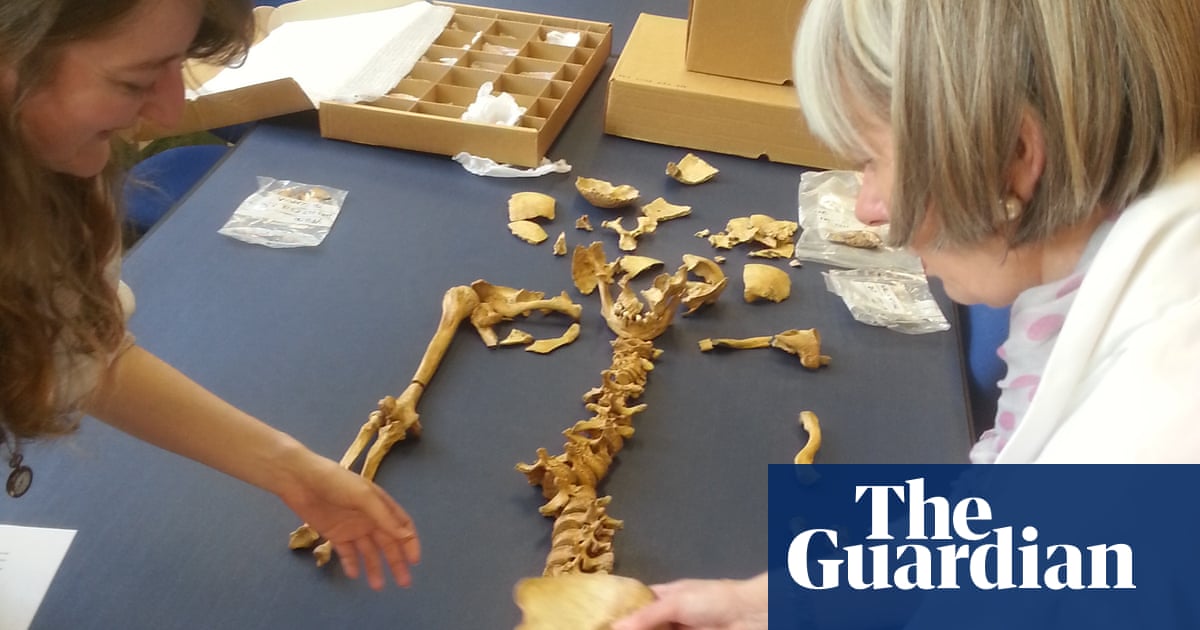
When developers broke ground on the outskirts of Scarborough, they were hoping to build a housing estate ideal for first-time buyers, families and professionals, with en suites, off-street parking and integrated kitchens galore. But before shovels had even hit earth, they found someone else had got there first: the Romans.
The remains of a Roman settlement believed to be the first of its kind discovered in Britain – and possibly the whole Roman empire – has been uncovered near the North Yorkshire seaside town.
The find might have caused a headache for the developer Keepmoat Homes but has sparked excitement among experts, with Historic England describing it as “easily the most important Roman discovery of the last decade”.
The large complex of buildings – approximately the size of two tennis courts – includes a cylindrical tower structure with a number of rooms leading from it and a bathhouse. As excavations and analysis continue, historians believe the site may have been the estate of a wealthy landowner, which could have later become a religious sanctuary or even a high-end “stately home cum – gentleman’s club”.
Keith Emerick, an inspector of ancient monuments at Historic England, said the site gave a fascinating new perspective on the Roman north.
“It’s not like a jigsaw, where each new discovery adds to the picture, each new discovery actually gives a twist to the kaleidoscope and changes the picture entirely,” he said.
“This is a really exciting discovery and definitely of national importance […] I would say this is one of the most important Roman discoveries in the past decade, actually. Easily.”
Archaeologists were employed by Keepmoat before building work started, as historians knew the site at Eastfield could contain prehistoric, iron age or Roman remains, but the uncovered site is “far more than we ever dreamed of discovering”, said Emerick.
North Yorkshire archaeologists have already established the buildings were “designed by the highest-quality architects in northern Europe in the era and constructed by the finest craftsmen”, said Karl Battersby from North Yorkshire county council.
Further work on the finds and environmental samples would help to establish exactly what function the site had and why it was created so far from other Roman centres, he said, adding: “This is a remarkable discovery which adds to the story of Roman settlement in North Yorkshire.”
While Keepmoat had to tweak its development plans to conserve the site, Dan Crew, the company’s regional managing director, said there was no sinking feeling when it was uncovered, as a discovery had been factored into planning. Rather prosaically, the site was not uncovered by a labourer, but identified before digging started by a geophysical survey.
“It’s a positive factor for the site, and it’s a positive for the area,” he said. “It probably sets this site apart from other new builds in the area. It’s quite a nice feature to know it has that historic element to it as well.”
Keepmoat had originally planned to build houses on the site, but a planned public green area has instead been relocated. The remains are to be recovered but a representation of the site will be “expressed at ground level”, for example with planting, an arrangement of stone, or interpretation panels, said Emerick.
“We have huge amounts of digital information that can be made available to the public, so people can get kind of a great deal more out of it, perhaps, than just kind of seeing a pile of stones that get overgrown.”
David Walker, the planning services manager at Scarborough borough council, said the council was happy to grant a change to Keepmoat’s original planning application. “In creating new homes for future generations, it is only right that we keep alive the fascinating history of those that have gone before us and how they lived,” he said.
Historic England will recommend the remains be protected as a nationally important scheduled monument.











